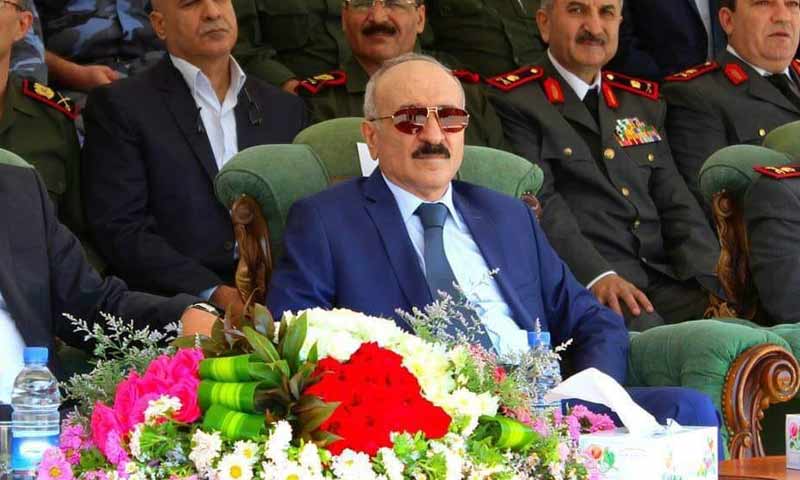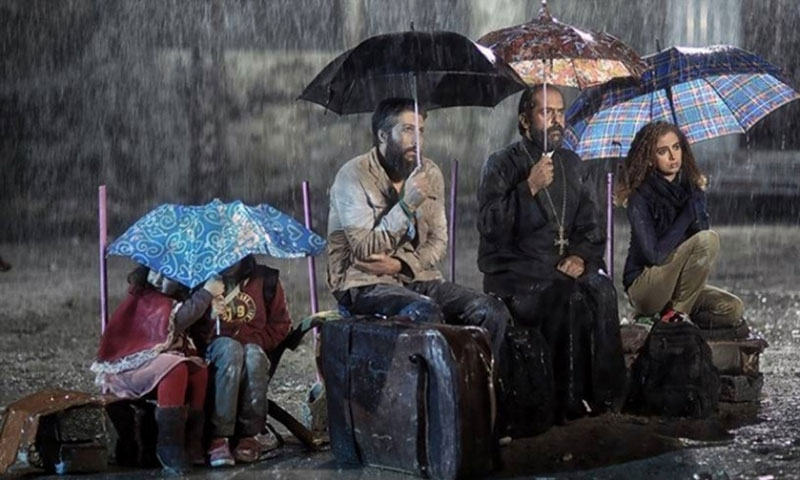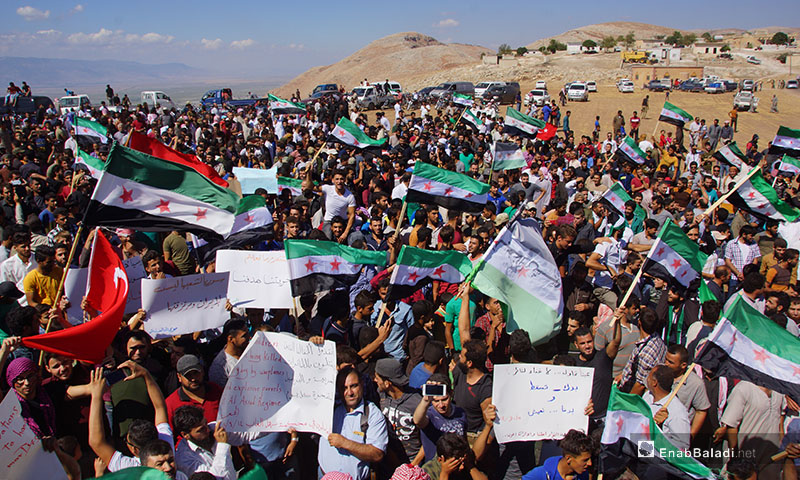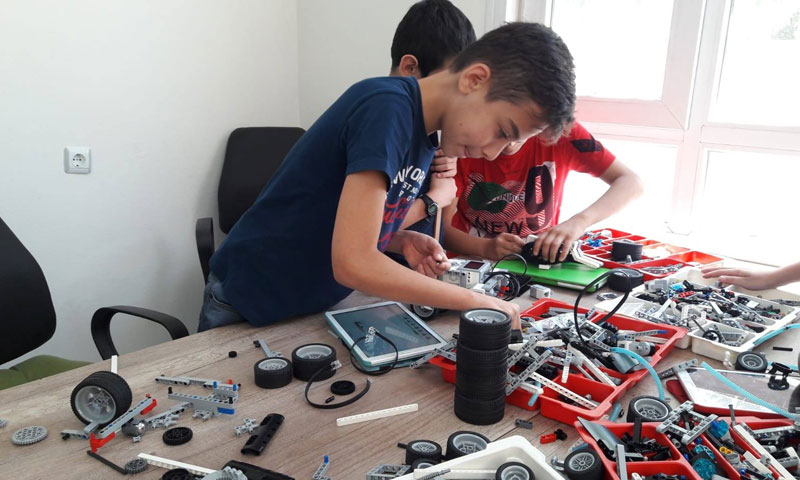The First Anniversary of the Great Massacre of Darayya
The First Anniversary of the Great Massacre of Darayya
An Analysis of the Field and Medical Situation During the Campaign
Enab Baladi Issue # 79 – Sunday August 25, 2013
Before the massacre, Darayya was under tight internal siege as the patrols of Air Force Intelligence strolled through the city in military motorcades of armored vehicles and buses filled with security personnel and Shabiha members. Up until late July of last year “beginning of Ramadan”, these patrols used to wander across the streets of Darayya around the clock breaking into homes, arresting, combing areas and occasionally killing people. The Free Syrian Army at the time was made up of small groups that have started carrying out scattered operations such as taking out some of the regime’s agents and waging limited attacks against surrounding check points using small and mid-range arms.
All this changed when FSA fighters executed a special operation against the army motorcade that was passing through Al Thawra street. Most of the motorcade members were killed and all vehicles were destroyed, and the regime decided not to send any further patrols and to draw its members from inside the city while keeping the check points at the city’s entrances. A new policy was applied and the regime started to rely more heavily on long-range mortar bombardment targeting two main areas in downtown Darayya namely Baladiya Street and Hurriya Square. The shelling intensified day by day and the targeted areas expanded claiming precious lives and causing limited material damages, yet this however did not stop activists from working and moving freely inside the city.
The August 2012 massacre that was perpetrated by Assad’s forces against civilians and military personnel in Darayya raised many question marks about the preparation of the FSA in the city and its operations before the incursion and the tactics that were used to resist Assad’s reinforcements. Other questions were raised about the reasons for the withdrawal and its repercussions on the ground, as well as the readiness of the medical and media cadres in the city.
In this report we will shed some light on the field situation of the FSA fighters before and during the massacre and the medical situation in the city during the great massacre.
FSA fighters taking positions in the orchids of Darayya
The FSA fighters began gathering in the eastern and western orchids of Darayya. They did so in formations that varied considerably in terms of armament, as each formation tried to consolidate its positions using the arms it seized during operations as well as the military aids they received from “Sa’ad Bin Abi Waqas Brigade” who in turn received military and media support from “Al Suhaba Brigades” in Damascus and Damascus countryside.
As a result of this discrepancy in the levels of armament, different formations started pointing accusations to the FSA leadership. The role of FSA leaders in distributing arms to various formations came under question, which prompted the establishment of “Faiha Al Sham Brigade” in early Ramadan 2012. The new brigade was made up of groups that used to work under “Sa’ad Brigade” and its establishment coincided with the founding of the Military Councils in the towns of Damascus countryside. However, Faiha Al Sham Brigade remained discreet and refused to disclose its allegiance and channels of support.
Ramadan carried with it little pressure by Assad’s forces against the city; the operations were limited to frequent mortar shelling that mainly resulted in material damages. The military presence of Assad’s forces was limited to the local police station that offered cooperation with the FSA, which enabled Darayya brigades to focus on stockpiling more weapons and recruiting young men in the FSA. Only light weapons and machine guns were available at the time.
The regime’s major operations during that period was focusing on Al Qadam and Al Medan to the south east of Darayya, which forced large numbers of FSA fighters to take refuge in Darayya, thus turning the city into an assembly point for all retreating forces. Other fighters from neighboring towns were also attracted to Darayya due to its “suitable” position which raised the number of fighters inside the city to about “1000” members including 5 officers. Moreover, swarms of injured fighters arrived to the field hospitals of Darayya and the city fast became a stronghold for FSA fighters in Western Gouta.
Groups Violations
Brigades operations during Ramadan were limited to hit and run attacks in the outskirts of the city, yet some groups chose to exceed their mandate and committed several violations including carrying weapons inside the city and confiscating government-owned vehicles. These violations prompted the leaders of the two main brigades to establish a military police body entrusted with the task of maintaining discipline and taking punitive actions against perpetrators. The newly formed police played a positive role in solving people’s problems and settling disputes in the absence of formal security presence.
The discipline imposed by the police enabled the city to continue its peaceful activities which it became well known for. Several campaigns were launched, the most notable of which was the city cleaning campaign and the “Principles of the Revolution” posters campaign. These campaigns proved that military and peaceful activities can go hand in hand.
A Fierce Campaign on All Fronts
The relative calmness in Ramadan was followed by the storm that started on the second day of Eid Al Fitr as Assad’s forces mobilized military reinforcements of over 12000 fighters and encircled the city from all sides. This push was accompanied by fire support through missiles launched from Mazzeh Military Airport and the strongholds of the Fourth Division in Muaddamiya. Following differences between the leaders on the best way to defend the city, the two brigades decided to take positions at the entrances of the city and confront any advancement.
Assad’s forces began their land incursion on the 22nd of August, advancing from the eastern side of the city where FSA fortifications were lacking, (The sector of Damascus Road, 3rd Road, Dahadeel Road and Almaamil Road). FSA formations positioned on those entrances tried to block the advancement of Assad’s military machine. However, their light arms proved insufficient, particularly against the T72 tanks equipped with interactive magnetic shields that were effectively impregnable against RPG rockets. Assad’s soldiers successfully controlled “Abu Salah” roundabout and took positions in the surrounding buildings, which forced the FSA to withdraw from “Damascus Road” on Thursday August 23rd after suffering heavy losses.
The advancement of Assad’s forces continued unabated on Friday Morning 24th. They swept across the eastern sector of the city under the heavy bombardment by rocket launchers installed in the orchids of that region and Kafarsousa where the FSA has previously withdrawn. This added to the confusion and disarray among FSA formations, as many of their leaders were killed in combats, and communication became difficult with the shutdown of mobile networks and the inadequate short range of the available radio transceivers. At the same time the conditions of civilians in shelters and the wounded in field hospitals worsened.
Abrupt Withdrawal
Civilians were not any better than their FSA counterparts, divisions arose between them as some supported the decision to stand and fight while others believed that confronting the advancement is futile. Many civilians wanted to join the FSA in its fight, although they received no military training.
Amidst all this tension, the leaders of the two brigades decided to withdraw from the city towards the western region. This decision raised a lot of accusations between civilians and members of the armed groups as rumors spread that one brigade abstained from supporting the other with men and ammunition. However, an insider resource with close ties to the leaders of the two brigades confirmed to Enab Baladi that the withdrawal decision was made in agreement between both leaders to “spare the city the unbearable consequences”
Arbitrary Execution
Some groups withdrew in a random manner that lacked any sense of responsibility. Moaz, one of Sa’ad Brigade fighters recalled how he and his friends were left alone near the Old Court of Darayya without being secured by other members of the group to be able to withdraw. He said they had encircled some of Al Assad’s soldiers before the sudden withdrawal of their group. Consequently, they were exposed to the hail of bullets while they were creeping to withdraw after being discovered by the soldiers.
Groups from outside the city refrained from confrontation after such decision. They began searching for the leaders of the Free Army to guide them where and how to withdraw, while other groups decided not to comply with the withdrawal decision and to fight until the last minute.
Some eyewitnesses told us that the refusal to withdraw by one of the groups resulted in the death of about 20 civilians from AL Sakka family after an exchange of fire between the fighters and Al Assad soldiers in the west eastern region of the city( near Al Zaroor Plantation). Finally, on Saturday morning, 25th of August, these groups had withdrawn to the western region after worthless confrontations.
No Place to Hide
FSA fighters found themselves trapped in an open and besieged area in the western orchids of the city. Meanwhile, Assad soldiers began carrying out field executions to civilians inside the city on the 25th of August. At first, fighters had to get rid of their arms and armors, only by burying them in the ground. Then the fighters began to replace their military uniforms with civilian clothes to remove any distinctive features that indicate joining the free army. Some were obliged to shave their beards even with a knife. Abu Khalil, one of the fighters, said he was engaged in the civilians after shaving his beard and wearing peasant clothes. However, other fighters were unlucky. Some of them, accompanied with some civilians that had been hiding at the same shelter, were executed after being discovered by the soldiers.
Only one group was able to escape to the neighboring region, Muaddamiya, at Saturday night, through a dirt road. The road was exposed to the snipers of Assad Forces that fired them, according to Abu Qusai, one of the survivors.
Combing the western region
Assad Forces began combing the western region on Sunday August 16. At the time, members of the FSA resorted to extremely primitive ways of hiding. Some, they said sought cover in the bushes; others climbed trees. One, we were told, buried himself in manure as he waited out the departure of Assad Forces. Others hid in houses of relatives residing in the area. The combing operation was swift and ended Sunday evening. Gradually, Assad Forces began to withdraw from the city after disbanding the largest concentration of FSA in western Ghouta at the time.
Compromised Preparedness and Medical Capabilities
Field hospitals in the city lacked the necessary equipment to handle a crisis of this proportion. This situation was aggravated by the fact that the decision to confront the Security Forces was taken rather late. The delay affected the performance of medical teams in more than one way, including identifying adequate venues for field hospitals, evacuation points and mechanisms. This was compounded by the large numbers of casualties among residents many of whom opted to stay in their homes. This scenario was avoided in subsequent campaigns.
The medical team included an orthopedic surgeon, a urological surgeon and an intern medical student specialized in general surgery who has not yet graduated. They were assisted by a group of volunteers who received first aid training. Some doctors participated part time for limited durations. The two medical stations, one in the Nakkash School, the other close to the Sukaina Shrine were first aid stations to stop bleeding and treat emergencies. They were not equipped with Operating Rooms. The third medical station in the city was underground and was rarely opened. Surgeries were performed in Radwan and Farouq hospitals which were both destroyed by the Security Forces during the last campaign.
On the first day of the campaign, the Trade School treated more than 200 injured before being targeted. The emergency center was then transferred to the technical school. Staff worked there during the second day of the campaign. Since many of the city’s inhabitants stayed there, the number of casualties was high and by far exceeded the capacity of the medical team. The dire situation in the technical school was identical to that of the Trade school. Large numbers of people were injured. Bad evacuation procedures and the total disregard to safety benchmarks exposed the area of the other medical station to heavy shelling, putting the life of personnel in harm’s way. It was therefore decided that the medical station will be moved for the third time to a basement close to the Moustafa Mosque.
The situation in the medical station located near the Sakina Shrine was very similar to the two stations described above although it was plagued by an absence of a specialized team. Doctors in charge of the Trade School station undertook rounds to care of the injured in the Sakina center which further compromised the capacity of attending doctors. In view of this, later on it was decided to organize medical care under the supervision of one command to avoid what happened during the massacre.
The Withdrawal
Assad Forces stormed the city on the third day. The withdrawal of the FSA was not organized. Doctors were not informed. Medical teams had to evacuate and secure the injured in addition to securing their own exit. Some members of the specialized medical team left on Saturday morning after hearing the news that the withdrawal of FSA was imminent.
By mid-day Saturday, the Security Forces arrived to Al-Rahman Mosque which is in close proximity to the medical station. Members of the medical team abandoned the station. Some martyrs were left in site. The injured were evacuated immediately although some of them needed to be operated on urgently. The medical team was divided into small groups entrusted with hiding and securing some of the injured who did not need surgeries. This was an extremely difficult task. The injured were transported more than once in the city under extremely complicated security conditions. The Security Forces divided the city into sectors and stormed the sectors accordingly. Transporting the injured across those sectors using loopholes in the grip of Security Forces over the city entailed major risks. Those who needed surgery were evacuated with surgeons to underground operating rooms designed to handle rare cases in the western region. The only doctors available at that time were the orthopedic surgeon and the medical intern. Two injured people were evacuated to the underground OR. Both needed to be operated on, urgently. The surgery which should have been performed in two hours lasted for eight hours. The delay caused the death of the second person. The attending medical team was not able to provide any assistance. By then, the security forces arrived in the area of the hospital but were not aware of the existence of the operating room right there. They searched the area, and when they did not find anything they moved on to other areas.
The medical team in the second station close to the Sukaina Shrine was not able to evacuate the injured due to the fact that the security forces surprised them and therefore had to flee, alone. The Security Forces stormed the hospital and summarily executed the injured after maliciously indulging in torturing them.
Darayya, a Year after the Massacre
The circumstances and pressures that visited the city during the Massacre brought to light the vulnerabilities of personnel on the ground. The military and medical personnel were not the only ones to suffer the confusion and lack of coordination. No one has the right to blame them, or at least to blame them solely for this. The media team was not in a better position. Sudden power outages, internet blackouts and lack of other means of communication caused a great confusion among its ranks which prompted the team to flee.
After the August massacre last year, Darayya attended to its wounds, recovered, learned its lessons and worked on improving the capabilities of its personnel. Nine months into a stifling siege and violent campaign, the city remains steadfast despite an exacerbated security situation, lack of resources and absence of personnel. This may be attributed to the lessons that all the stakeholders learned from last year’s bitter experience.
if you think the article contain wrong information or you have additional details Send Correction
-
Follow us :

















 A
A
A
A
A
A







 More Translated Articles
More Translated Articles